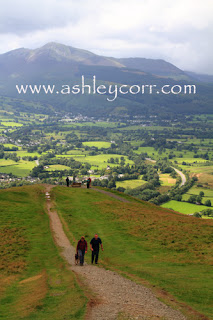The structure was officially opened on 17 October 1911 by Prince Arthur of Connaught. Designed by Darlington-based Cleveland Bridge & Engineering Co, the bridge cost £87,316 to build. The Grade II-listed Transporter Bridge, linking Middlesbrough and Port Clarence, is one of only six of its type still operating in the world and the only one in England. At its peak in 1919, 5.1 million pedestrians crossed the bridge, compared to just 16,000 (and 120,000 vehicles) in 2010. Often threatened with closure in the past, it is now seen as Teesside's icon. The bridge has survived German bombing raids, been featured on TV and in films, and on the video and cover of the single High by the Lighthouse Family. The running of the bridge is funded by both Middlesbrough and Stockton councils. Motorists, it seems, are opting to use 100-year-old engineering rather than take the often jammed Tees flyover.
The bridge, which turns 100 on 17 October, is a sign of home to some,
 and a sign of great engineering to all. The giant blue steel structure joins Port Clarence to Middlesbrough across the River Tees, and although passengers are now on the up, they hit a low in 2006 when only 90,927 made use of the bridge. Now on the rise, more than 122,000 passengers have used the blue bridge's yellow gondola to cross the river in 2009. Pedestrians can even buy a ticket to walk across the top of the bridge. Those who do not have the stomach can board the gondola at one side of the river and be carried across to the other. Commuters form the traffic these days, with many shoppers and tourists using it during off peak periods. The bridge is not only a symbol of the industrial north, it has also far exceeded the working life envisaged by its designers when it opened to traffic in 1911.
and a sign of great engineering to all. The giant blue steel structure joins Port Clarence to Middlesbrough across the River Tees, and although passengers are now on the up, they hit a low in 2006 when only 90,927 made use of the bridge. Now on the rise, more than 122,000 passengers have used the blue bridge's yellow gondola to cross the river in 2009. Pedestrians can even buy a ticket to walk across the top of the bridge. Those who do not have the stomach can board the gondola at one side of the river and be carried across to the other. Commuters form the traffic these days, with many shoppers and tourists using it during off peak periods. The bridge is not only a symbol of the industrial north, it has also far exceeded the working life envisaged by its designers when it opened to traffic in 1911.Centenary celebrations included a concert, i
 nteractive light display and people bungee jumping off the bridge. The event spanned a total of two weeks and it wasn't until the penultimate night that I made the 30 minute journey down the A19 to grab some photographs before my chance had passed. I arrived at the site just after sundown, which was probably the best way to begin my visit as I captured a fine silhouette shot with the bright horizon positioned right behind the bridge. The Transporter shipped its last vehicle across the river shortly after six o' clock - my first shot captured the crossing, shown above (picture one). I got chatting to a Proffesional Photographer who'd travelled down from Newcastle to photograph the bridge. He told me the Transporter Bridge light show was due to begin at 7.30pm and seeing as it was only 6.15pm at this point I decided to nip off for something to eat and return later to catch the light show. Within fifteen minutes I found myself in a fish and chip shop at nearby Seaton Carew - no surprise there!
nteractive light display and people bungee jumping off the bridge. The event spanned a total of two weeks and it wasn't until the penultimate night that I made the 30 minute journey down the A19 to grab some photographs before my chance had passed. I arrived at the site just after sundown, which was probably the best way to begin my visit as I captured a fine silhouette shot with the bright horizon positioned right behind the bridge. The Transporter shipped its last vehicle across the river shortly after six o' clock - my first shot captured the crossing, shown above (picture one). I got chatting to a Proffesional Photographer who'd travelled down from Newcastle to photograph the bridge. He told me the Transporter Bridge light show was due to begin at 7.30pm and seeing as it was only 6.15pm at this point I decided to nip off for something to eat and return later to catch the light show. Within fifteen minutes I found myself in a fish and chip shop at nearby Seaton Carew - no surprise there!Belly full and back to Teesside via the many power stations en route. It was a bit nippy by this time but I was soon in position on the river bank and awaiting the light show. A few photographers had gathered with tripods nearby. At half-seven precise the light show began. Rotating spotlights covered almost every inch of the giant structure, producing a shimmering effect on the steel, in a similar way that water reflects on a subject during bright sunlight. It was quite spectacular! As the evening light subsided the job of photographing the bridge became more challenging. The bridge ends were almost impossible to see through the viewfinder, making composition a bit of a task and 'Tight crop' certainly wasn't in my plan. Gone was the deep blue sky, replaced by a muddy brown tone, but still offering a nice shot.
Approaching 8 bells and it was time for the off. Back up the A19 towards God's Country - BYE BYE SMOG!
Cheers, AC









